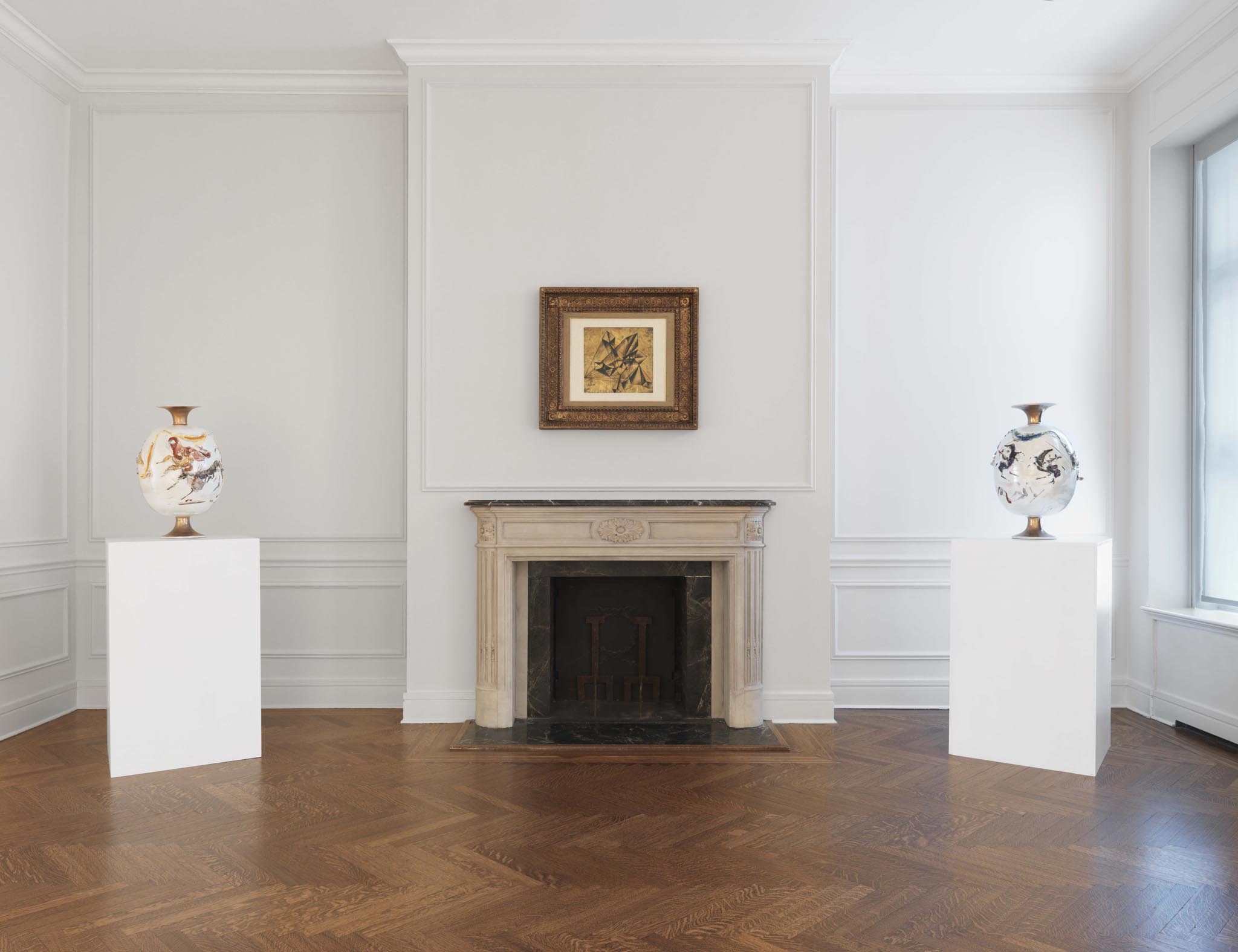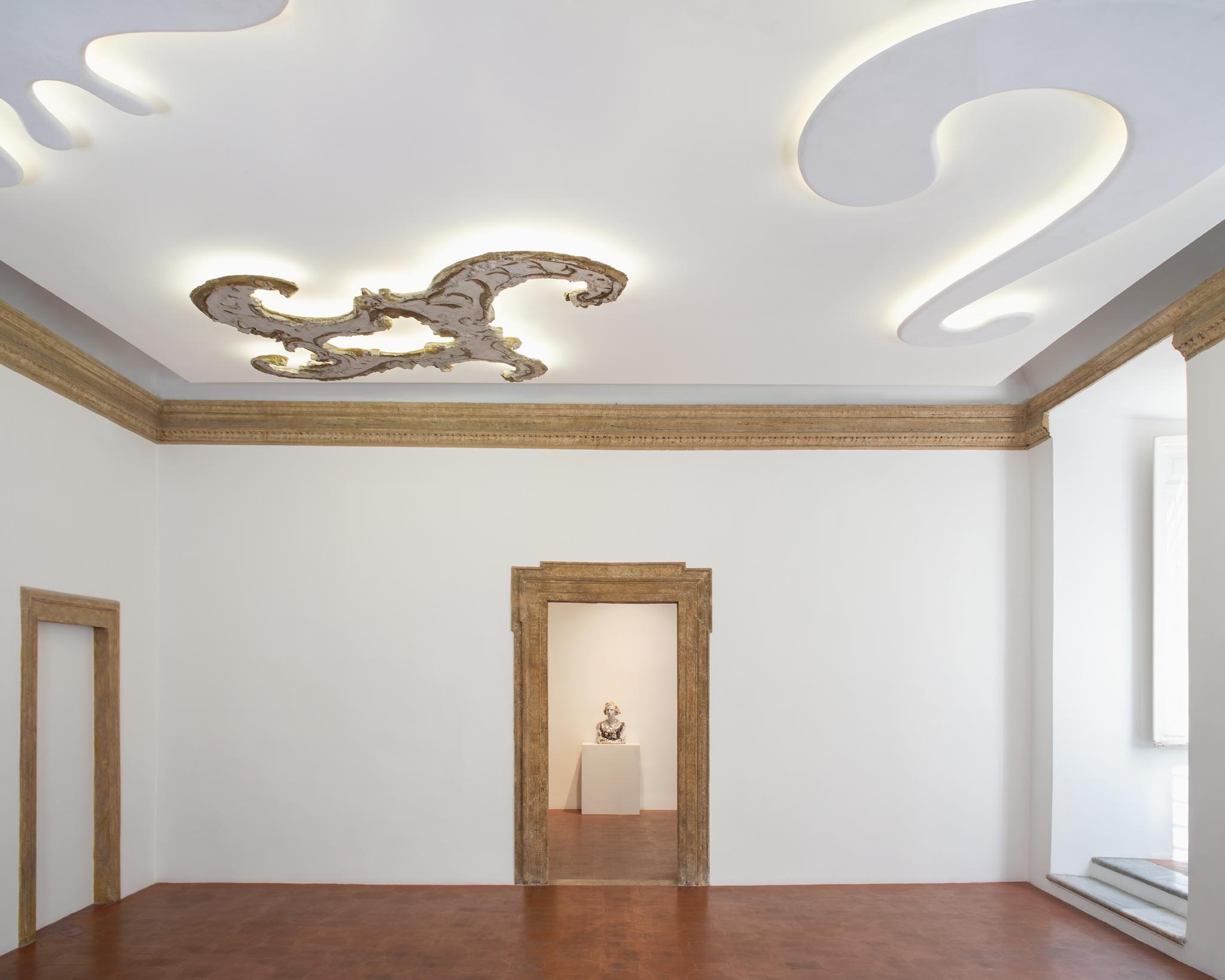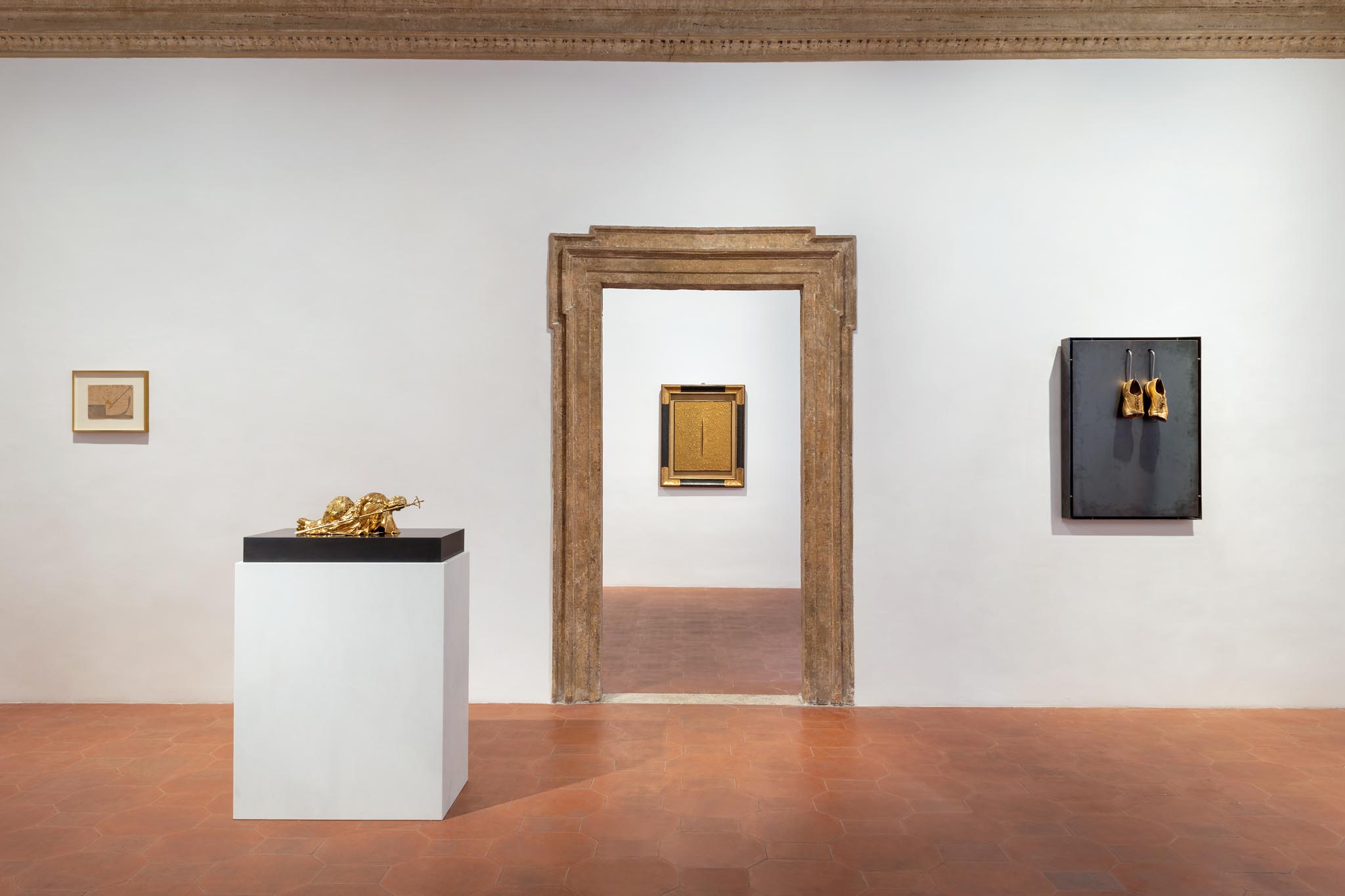Lucio Fontana was born on February 19, 1899, in Rosario de Santa Fé, Argentina, to parents of Italian descent. His artistic journey began early under the guidance of his father Luigi, a sculptor known for his commercial work. During his formative years, Fontana also pursued formal education at the Carlo Cattaneo Technical Institute in Milan, enrolling in the School of Master Builders. However, in 1916, he interrupted his studies to volunteer for the Italian army, serving on the front lines during World War I.
In the 1920s, after being discharged and awarded a silver medal for valor, Fontana completed his qualifications as a building surveyor. He then returned to Rosario de Santa Fé, where he began working full-time in his father’s studio, Fontana y Scarabelli.
A pivotal moment came in 1924, when Fontana chose to distance himself from his father’s tutelage and opened his ownsculpture studio. There, he began approaching sculpture not as commercial craft but as a medium for artistic and conceptual exploration. In 1927, he enrolled at the Brera Academy in Milan, studying under the influential sculptor Adolfo Wildt. He graduated in 1929, presenting El Auriga (1928) as his final work.
The following year marked Fontana’s debut at the Venice Biennale, where he exhibited Eva (1928) and Vittoria Fascista(1929). That same year, during his first solo exhibition at Galleria del Milione in Milan, he unveiled Uomo nero (1930), a groundbreaking sculpture that marked a stylistic shift toward geometric abstraction in the depiction of the human figure. This theme, first crystallized in this work, would recur throughout his career, and was further explored in a solo show at the same gallery in 1934.
Over the next five years, Fontana focused primarily on ceramics, working closely with his friend Giuseppe Mazzotti in his Albisola workshop in Savona.
In the 1940s, he experimented with colored mosaics and created Volo delle Vittorie, a frieze in Milan’s Piazza San Sepolcro. Torn between Italy and Argentina, Fontana eventually decided to return to his birthplace.
In 1946, he introduced the term Concetto spaziale in a series of drawings—a title that would come to define a major part of his oeuvre. The following year, Fontana moved back to Albisola and, alongside critic Giorgio Kaisserlian, philosopher Beniamino Joppolo, and writer Milena Milani, co-authored the First Manifesto of Spatialism. A second draft followed in 1948, and a third version titled Proposal for a Regulation came shortly after. These texts called for a radical break from past art, proposing instead to “make painting come out of its frame and sculpture out of its bell jar,” and to embrace new artistic languages through technological innovation.
Around this time, Fontana began his iconic Buchi series—paintings featuring rhythmic perforations made with an awl, set within gestural, monochromatic color fields. He continued his ceramic production and was included in the 1949 exhibition Twentieth-Century Italian Art at the Museum of Modern Art in New York. In 1950, he also held a solo exhibition at the XXV Venice Biennale.
In 1952, Fontana, together with Luciano Minguzzi, won the competition to design the Fifth Door of Milan Cathedral, organized by the Veneranda Fabbrica del Duomo. That same year, he contributed to the Milan Triennale, collaborating with architects Luciano Baldessari and Marcello Grisotti on an ambitious project of spatial design, which included a neon arabesque for the grand staircase and an innovative lighting installation for the vestibule and lobby.
Fontana then co-signed the Fourth Spatialist Manifesto with Anton Giulio Ambrosini, Giancarlo Carozzi, Roberto Crippa, Mario De Luigi, Gianni Dova, Virgilio Guidi, Beniamino Joppolo, Milena Milani, Berto Morucchio, Cesare Peverelli, and Vinicio Vianello. He also participated in the Manifesto of the Spatial Movement for Television, emphasizing the role of new media in the evolution of contemporary art.
In the same year, he exhibited a group of Buchi paintings at Arte Spaziale at Galleria del Naviglio. The 1950s marked a prolific period of experimentation, during which Fontana gained international recognition. Highlights of this decade include the Pietre series—introduced at the VII Quadriennale in Rome in 1955—and two other series developed between 1954 and 1958: Gessi (Plasters) and Barocchi (Baroque works).
At the XXIX Venice Biennale in 1958, Fontana presented two pivotal bodies of work: the Inchiostri (Inks) and his spatial sculptures mounted on metal rods. Later that year, he debuted his legendary Tagli (Cuts)—canvases slashed with a knife—at Galleria del Naviglio in Milan. These were later shown at Galerie Stadler in Paris, Documenta in Kassel, the São Paulo Biennial, Galleria L’Attico in Rome, Galerie Schmela in Düsseldorf, and McRoberts & Tunnard in London between 1959 and 1960.
Fontana’s creative period continued into the late 1950s and early 1960s with the Quanta and Nature series. Beginning in the early 1960s, he also focused on the Olii series—oil paintings inspired by the city of Venice—which were featured in his first solo show in the United States, held at the Martha Jackson Gallery in New York, in 1961.
During the same year, influenced by New York’s energy and modernity, he created the Metalli series—works made of reflective metal sheets that he tore and incised. His work was shown extensively during this period in Milan, Venice, Tokyo, London, and Brussels.
A key moment in Fontana’s iconographic evolution came with the Fine di Dio series (1963–1964): large, oval canvases—either monochromatic or adorned with sequins—punctured and slashed in expressive gestures. These works were first exhibited at Galleria Arco d’Alibert in Milan and then at Galerie Iris Clert in Paris.
This was followed by the Teatrini series (1964–1966), where colorful lacquered wooden frames shaped various abstract forms, interacting with pierced and painted backdrops.
In 1966, Fontana achieved major international success. He held solo exhibitions at the Walker Art Center in Minneapolis, the Marlborough Gallery in New York, and Galerie Alexander Iolas in Paris. At the XXXIII Venice Biennale, a dedicated room showcased his collaboration with architect Carlo Scarpa: a labyrinthine, oval-shaped installation lit with white light, featuring monochrome canvases, each slashed once and arranged to create a meditative and immersive environment. This work earned him the Biennale’s top honor.
In 1967, Fontana’s pursuit of the essential reached its peak. His Ellissi series featured elliptical, lacquered wooden panels in vibrant colors, punctured with machine-made holes—a synthesis of technology and form.
In early 1968, Fontana left his studio on Corso Monforte in Milan and moved to Comabbio, in the province of Varese, where he passed away on September 7 of that year.
Fontana’s works are now part of the permanent collections of major national and international institutions, including the Tate Modern in London, the Museum of Modern Aart and the Solomon R. Guggenheim Museum in New York, the Peggy Guggenheim Collection in Venice, the Centre Pompidou in Paris, the Galleria Nazionale d’Arte Moderna e Contemporanea in Rome, MART in Rovereto, and the MADRE Museum in Naples.


